Hellscape: Preparing for a China-Taiwan Conflict
What Policy Makers, Miiltary Leaders, and Industry Leaders must prioritize to ensure Taiwan remains free and independent
Last month, Admiral Samuel Paparo, the senior US military commander in the IndoPacific, announced plans to create a ‘Hellscape’ of unmanned systems to counter a potential Chinese assault on Taiwan.
China’s People’s Liberation Army (PLA) has asserted that its drones can overcome such a US Hellscape.
Many in DC and across the west have become convinced that China is preparing for a military takeover of Taiwan by 2027, leaving only about 30 months to prepare the relationships, systems, other capabilities, and plans for such a Hellscape.
There’s much to do and little time.
The context
China (formally, the People’s Republic of China) has long considered Taiwan to be a part of its country. Taiwan (formally, the Republic of China) has long considered itself separate and distinct.
Following the Second World War, Chinese Nationalist or Kuomintang forces under Chiang Kai-shek seized the island of Formosa from the Japanese, changing its name to Taiwan. In mainland China, the Chinese Communist forces under Mao Zedong defeated the Kuomintang in a series of battles in the late 1940s, forcing the Kuomintang to retreat to Taiwan, where they established the Republic of China.
While there’s much more to write about the period from 1950 to present, we’ll zip through it, simply highlighting that China has never accepted Taiwanese independence.
China’s current leader Xi Jinping has announced that the reunification of island to mainland is ‘inevitable.’
The rush
China has long maintained that it sought peaceful reunification, but concerns are growing that it may seek to use military force to achieve its ends.
When the United Kingdom handed over Hong Kong to China, it was on the condition that Hong Kong maintain a certain amount of political and economic independence as a Special Administrative Region (SAR), for at least 50 years. This has become known as “One Country, Two Systems.” For his part, China’s leader Xi, has outlined his desires to fold the SARs like Hong Kong and Macau back into China more fully.
In 2020, China passed a new law that increased its control over Hong Kong. When Hongkongers protested, China initiated a violent and brutal crackdown, demonstrating its unwillingness to abide dissent. As a result, it seems unlikely that China would allow a true “One Country, Two Systems” model with Taiwan, and less likely that the Taiwanese would embrace it.
Even were such a model possible, the Taiwanese people would likely reject it. Sentiment against reunification remains above 80%, the ruling Democratic Progressive Party (DPP) remains pro-independence, and Taiwanese law maintains careful separations from China.
So, for China to achieve reunification with a Taiwanese opposition, it will almost certainly have to do so through force.
It is therefore unsurprising that China recently dropped the pretext that any reunification would be ‘peaceful.’
But that still doesn’t explain why all eyes are on 2027.
That date takes significance for two primary reasons.
First, the People’s Liberation Army was born on August 1st, 1927, in response to violent suppression of communists in Chinese cities by the Kuomintang in April of that year. Reunification of Taiwan and the annihilation of the Kuomintang in 2027 would provide a certain bookend to the Chinese Civil War and Communist Revolution that started a century earlier.
Second, Xi Jinping’s third term as General Secretary of the Chinese Communist Party concludes in 2027. The CCP amended its constitution in 2022 to allow Xi’s reelection, the first ruler since Mao Zedong to be elected to a third term. It’s important to note that in congress, Xi announced that the reunification will be realized. While he likely will continue ruling past this third term, he may feel a certain pressure to demonstrate success along his 14 Principles, which includes the reunification of Taiwan.
That the date is important is evident in China’s push to significantly modernize its military by then. While analysts debate the extent to which China could militarily attack Taiwan in 2027, it’s generally accepted that date begins a window of opportunity for such actions.
The capabilities
China’s military modernization is creating a technological, highly-capable, and lethal force. This modernization began around the turn of the millennium as then Chairman Hu Jintao emphasized a leaner, more technologically savvy military giving preferential treatment to the Navy, Air Force, and Rocket Forces.
While Hu may have initiated some modernization reforms, Xi has propelled them forward, more than doubling the country’s defense budget since 2015. China’s defense budget is the second largest in the world, after the US, and analysts suspect it is three times larger than what the country reports.
In 2020, China outlined a three-step plan to modernize its force with milestones in 2027, 2035, and 2049. By 2027, China is seeking to accelerate mechanization, informatization, and intelligentization of its forces—and it looks to be making strong progress on that front.
One of Xi’s early reforms was to elevate the Rocket Forces to the service-level, comparable to the Army, Navy, Air Force. This elevation demonstrates the important role that long-range fires plays in Chinese military planning for future wars.
Another reform that came earlier this year was the creation of the Information Support Force, which is effectively replacing the Strategic Support Forces that previously oversaw space operations. China has moved very quickly to create an effective, military space capability, leading the commander of the US Space Command to describe it as a ‘breathtaking pace.’ China has launched the first-ever synthetic aperture radar (SAR) satellite into geosynchronous orbit (GEO), and has more than doubled the number of satellites it has in orbit in the past few years.
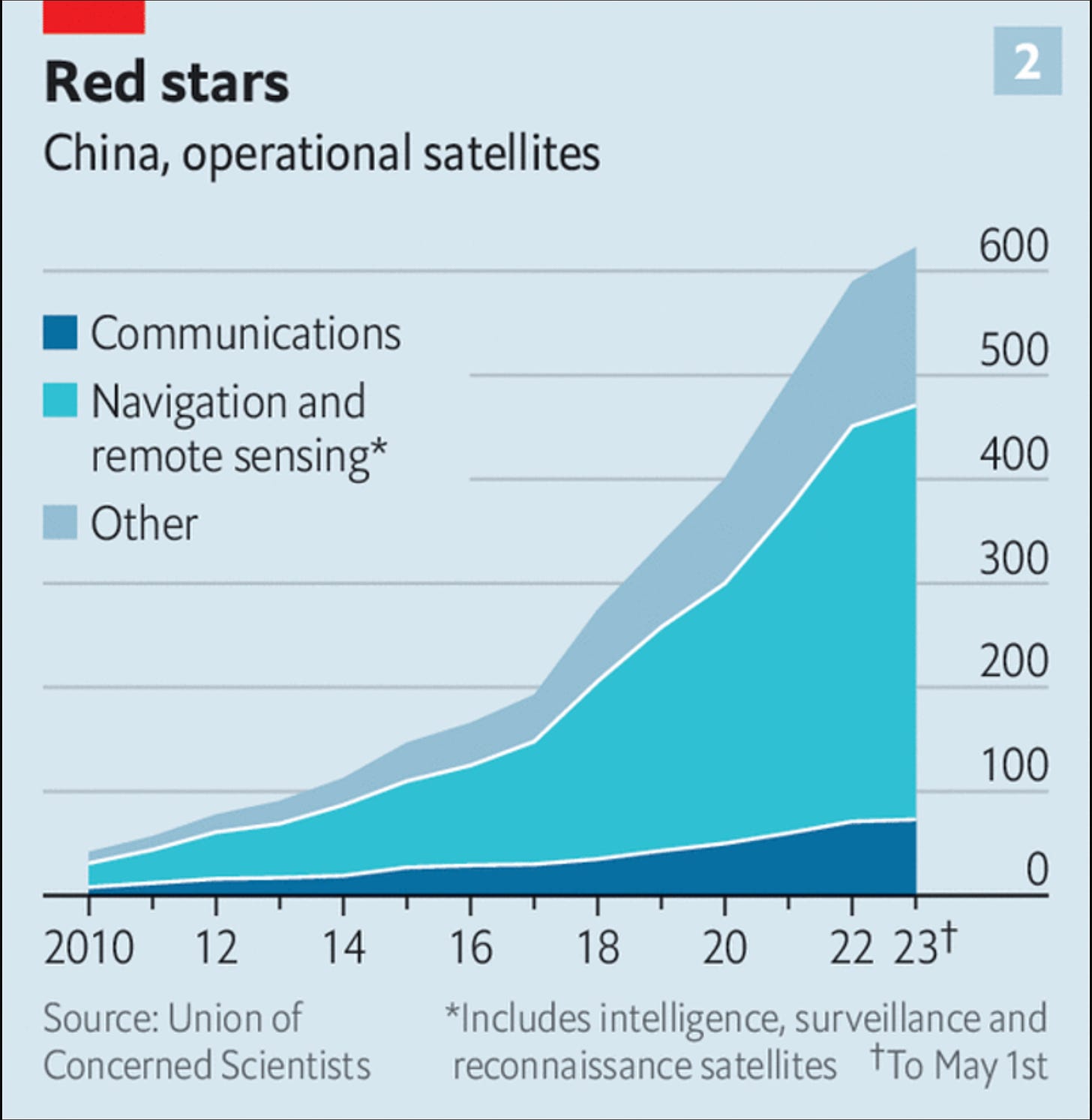
China has also built the largest navy in the world, 74% larger than the United States’ navy. While their navy is not yet as capable as the US Navy, they are close behind and—as bears repeating—mass has a quality of its own. Put simply, the sheer size of their navy poses a threat. An even greater threat is their shipbuilding capacity which absolutely dwarfs America’s capacity. In fact, the Jiangnan Shipyard on Changxing Island in Shanghai alone has greater capacity than every shipyard in the United States.
And this brings us to a critical point concerning China’s technological capabilities. China has already begun revitalizing and mobilizing its industrial base, and it is outpacing the west. As a result, it is the undisputed leader in the development of hypersonic weapons, such as its DZ-ZF hypersonic glide missile. It’s long term economic plays into the Western hemisphere, have also provided it a strong degree of influence on the production and refinement of minerals critical to the development and production of our own hypersonic capabilities—such as the mineral Niobium.
China is also hyper focused on artificial intelligence. The country has announced its intent to be the global leader in AI by 2030. And, China is well on its way to accomplishing this goal. China has already overtaken the US in producing research papers on AI, and has considerably closed the gap in the quality of those papers. In other words, Chinese research is roughly on par with US research into this important technology with broad implications ranging from accelerating its industrial capacity even further to autonomous systems capable of closing kill chains faster.
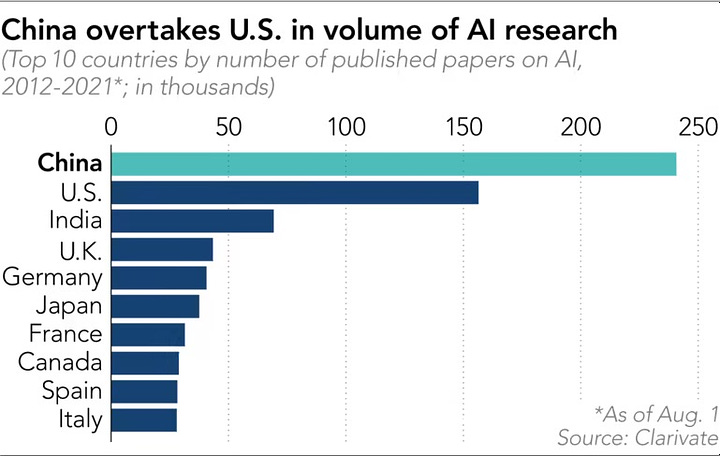
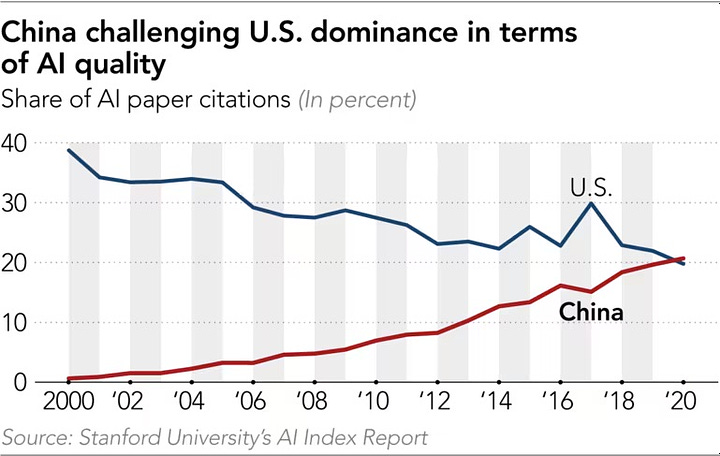
On the topic of autonomous systems, China has long dominated the sUAS or First Person View (FPV) market through the DJI company. While these FPVs have been used to devastating effect in the Ukraine War, China won’t be launching FPVs from the mainland to invade Taiwan. Those FPVs have limited ranges, and the narrowest portion of the Taiwan strait is 81km. To be sure, there will be FPVs used in such an attack, but it’s more likely that they’ll be launched from either sea vessels or other aircraft (both potentially autonomous as well).
Due to the distance of the Taiwan strait, it’s even more likely that we’ll see longer range, larger attack UAS. China has built and provided attack drones to Russia to employ in Ukraine. This arrangement has allowed China to accelerate its production of such systems, gain valuable feedback on them, and develop doctrine around their employment. China and Russia have further begun collaboration on developing a drone similar to the Iranian Shahed, a low-cost, mass-producible weapon system.
While there is plenty more that can be written about China’s specific capabilities, I think the above gives a decent sense that China has considerably modernized its military, developed advanced technologies, and will pose a considerable threat as an adversary.
The Scenario
China has conducted several simulations using only drones to isolate Taiwan from external aid, destroy key defensive systems, and coerce Taipei into capitulation.
While drones are far more advanced than the technologies of yesteryear, I am reminded of the timeless words of T.R. Fehrenbach:
You may fly over a land forever; you may bomb it, atomize it, pulverize it and wipe it clean of life—but if you desire to defend it, protect it and keep it for civilization, you must do this on the ground, the way the Roman legions did, by putting your young men in the mud.
There is no serious scenario, in which China can seize Taiwan nor where the US can assist in defending Taiwan, that is mudless and bloodless.
It is more likely that what may start out as drone v. drone warfare will escalate into a larger, more personal conflict.
So to understand what the United States may require, we’ll start with some ideas about how the conflict could unfold. Others have provided far more detailed scenarios, but this is just to help frame the discussion. It may begin with China establishing a naval blockade of the island using both traditional naval craft and unmanned warships.
PLA hypersonic missiles will be retained for deterrence of Taiwan’s allies, rather than used directly against Taipei. The speed and range of the missiles makes it impractical. Instead, the Rocket Forces will launch a barrage of short range ballistic missiles (SRBMs) and ground launched cruise missiles (GLCMs), targeting Taiwanese air defense capabilities to suppress and destroy them. Some of these systems may also target command nodes in Taiwan. Additionally, elements of both the PLA Rocket Forces and Air Forces will launch low-cost, attritable drones for multi-role missions including reconnaissance and strike options. The navy will likely retain its drones as it focuses outward from Taiwan island, focusing their use on maritime tracking and targeting of potential adversaries.
Eventually, the PLA will be forced to attempt a complex air- and amphibious-assault of the island, using its many hovercrafts to transport soldiers from the mainland.
Through it all, the PLA Information Support Forces will wage a highly sophisticated set of campaigns in multiple domains. These campaigns will begin with a dedicated shaping phase, prior to any launch of physical operations to influence international opinion, using platforms including TikTok. The PLAISF will also attempt cyber operations to disrupt western command and control and create disorganized responses that it can better interdict. Finally, in space, the PLAISF will use its capability to provide early warning of western military actions against it and to control strategic strike capabilities including its hypersonic glide vehicles, to prevent western militaries from approaching the island (and the Chinese blockade).
The counter
This scenario presents a series of interconnected and complex challenges that the “west” (Taiwanese allies) will have to overcome. In short, we will have to prepare for the following:
Naval and aerial blockade
Large barrages of SRBMs and GLCMs
Large fleets (and potentially swarms) of attritable attack drones
Aerial and amphibious assaults
Maritime tracking of western ships
Light and mechanized infantry
Information operations
Space operations
Long range, hypersonic attacks to prevent interference
Working with this list, we can start to understand where policy makers, military leaders, and industry can help shape the capabilities needed to protect a free and independent Taiwan.
Policy
To start with, the United States must focus on creating strong bilateral and multilateral agreements across the Indo-Pacific. These should include agreements for sustainment and logistical support, similar to what the Assistant Secretary of Defense for Sustainment, Hon. Chris Lowman, has proposed under the Regional Sustainment Framework. These agreements will enable the United States and its allies and partners to shorten logistical tails, tapping into domestic production capabilities in forward areas like the Philippines, Japan, etc.
Next, we ought to continue strengthening AUKUS, especially Pillar 2, and AUKUS-like agreements in the region. This could include the oft-discussed broadening of Pillar 2 to include countries such as Canada, Japan, South Korea, and New Zealand. Pillar 2 is focused on the joint development of advanced military capabilities, required to maintain parity and advantage over highly-efficient, centrally-controlled autocratic RDT&E efforts.
Third, as we adopt the (delayed) implementation plan for the National Defense Industrial Strategy, we can fill shortfalls through partner capacity. For example, South Korea and Japan both have tremendous shipbuilding capacity. Similarly, there may be opportunities to ‘friend-shore’ munitions production while we continue to build out our own capacity.
Finally, the United States has to truly get serious about rebuilding the industrial base. We’ve seen great effort in recent years through programs like the Manufacturing Capability Expansion and Innovation Prioritization, which has invested heavily into developing strategic mineral capabilities in the United States. Nevertheless, we must find unique ways to align incentives between the DoD and industry. I think one immediate way is through the acknowledgement that (semi-)autonomous attack systems are not traditional manned aircraft and that we should not subject treat them according to the same rules. Combined with the establishment of programs of record for attritable systems, this subtle change to the regulatory frameworks will accelerate the ability to bring non-traditional defense manufacturers into the Defense Industrial Base, broadening it and accelerating production.
Military
The military must lean into its unique information warfare capabilities. Much of the west’s success in the Cold War is owed to the role played by Radio Free Europe, Radio Liberty, and even Hollywood. While this obviously makes it larger than just a military problem, the military maintains unique capabilities in organizations like the Psychological Operations Groups. We must seek and leverage counters to adversarial information campaign and agenda setting.
Next, the military must continue to seek forward basing opportunities in the first and second island chains.
It is important to note that China essentially claims everything within the First Island Chain to be its territory, including contested areas such as the Paracels, Spratley, and Senkaku archipelagos. Basing and capabilities in this area (e.g., Okinawa, Luzon, Palawan) provide forward deterrence capabilities and assurance measures to our hosts in the region. Bases in the Second Island Chain provide standoff for survivability, while also shortening logistical leaps from the United States or Australia.
Finally, the military must continue joint military exercises across the IndoPacific region to improve interoperability and readiness with our partners and allies.
Industry / Tech
First and foremost, the hellscape is not enough. While attack drones may complicate how a Chinese invasion force would conduct an assault, as outlined above the Chinese operational will be far more complex. Industry can assist by providing solutions that overcome the tyranny of distance, developing solutions to the weapons that China would employ, and developing attritable autonomous systems at scale.
A Chinese naval blockade, coupled with the massive size of the Pacific Ocean, could inhibit logistics and sustainment of forces near Taiwan. Developing technologies related to in-situ resource utilization and delivery mechanisms—such as AUVs—that can deliver materiel through blockades becomes the first step in overcoming a Chinese seizure.
Counter-UAS and counter-fires technology is the next area where industry can have meaningful impact. As China attacks with fleets of drones and missiles, providing Taiwan and our own forces with capabilities to defeat those threats is paramount to success. While progress has been made on electronic jamming capabilities, I suspect that at the end of the day, kinetic capabilities will always win.
Counter-hypersonic technology will become important for protecting critical assets across the region (in the Second Island Chain) and beyond. This challenge is monumental due to the speed and maneuverability of these weapons. Hypersonic- and ballistic-tracking, space-based sensors can provide early warning of the systems.
Finally, industry must find ways to continue making production for defense faster, more scalable, and less expensive. This is true both in the United States and abroad (akin to the aforementioned Regional Sustainment Frameworks). Tapping into the spare capacity of industry and employing processes designed for efficiency along with newer technologies can unlock potential speed and flexibility. In order for the United States to create Papparo’s envisioned Hellscape, we will require tens of thousands if not hundreds of thousands of autonomous and semi-autonomous systems. Production at this level will require unprecedented scale and speed.
Undoubtedly, there are other efforts to be made in each of these three categories: policy, military, and industry. Still, these are the most important things that we can do today to prepare for a potential conflict with China in Taiwan.
And we must remember that only through strength, capabilities, and a demonstrated willingness to use those capabilities can we deter threats.
Conclusion
The race to prepare for a potential conflict over Taiwan is a critical challenge that demands urgent and coordinated action. The US and its allies must leverage their technological, industrial, and strategic advantages to counter China’s ambitions and ensure a free and independent Taiwan. Strengthening alliances, accelerating defense innovation, and maintaining a robust presence in the Indo-Pacific are essential steps to deter aggression and promote stability.
With the 2027 window rapidly approaching, we need immediate action to ensure readiness and deterrence. By addressing these complex challenges in a coherent and technologically-enabled manner, the West can uphold the principles of sovereignty and peace that underpin the international order.
Keep Building,
Andrew


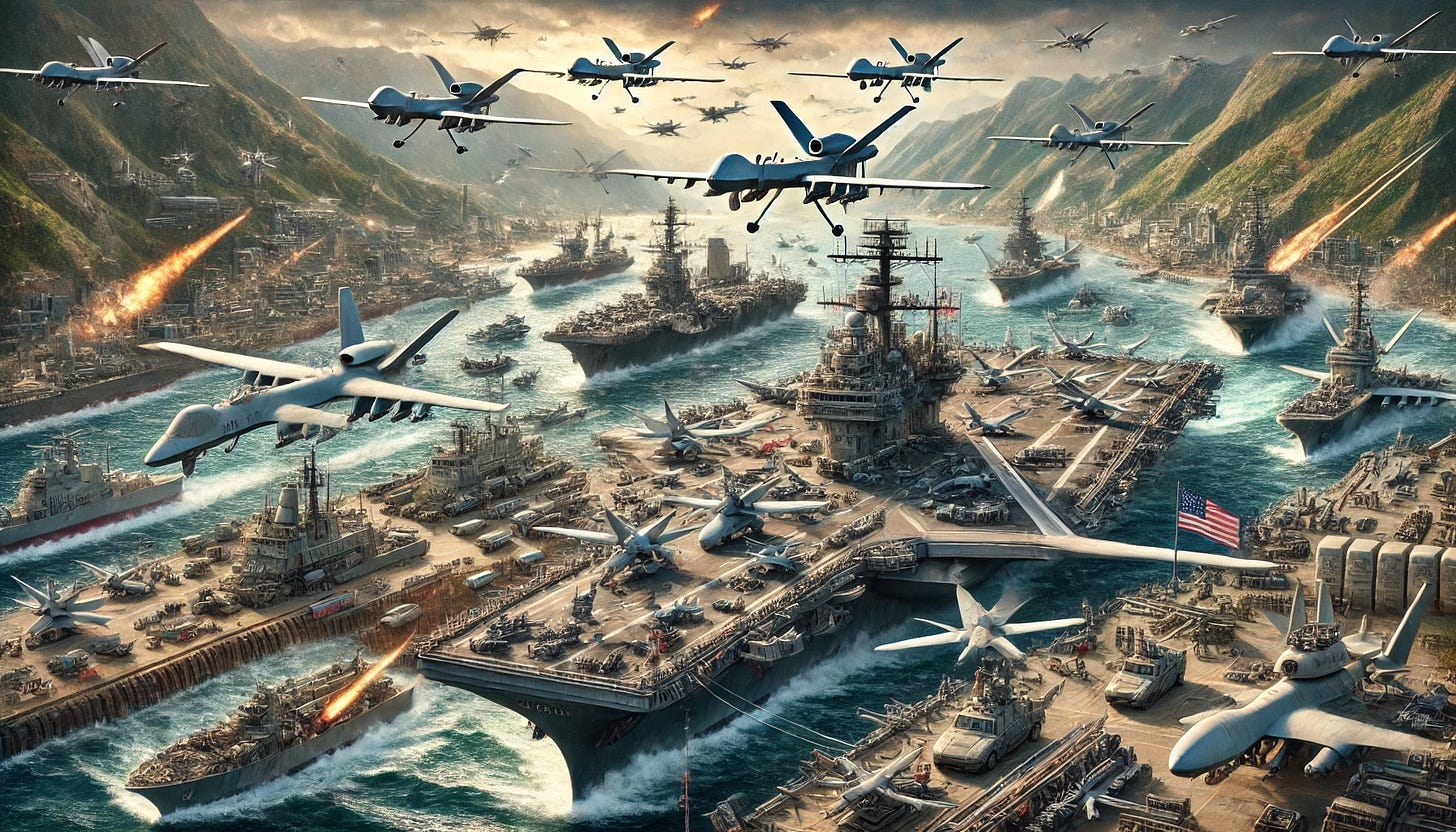

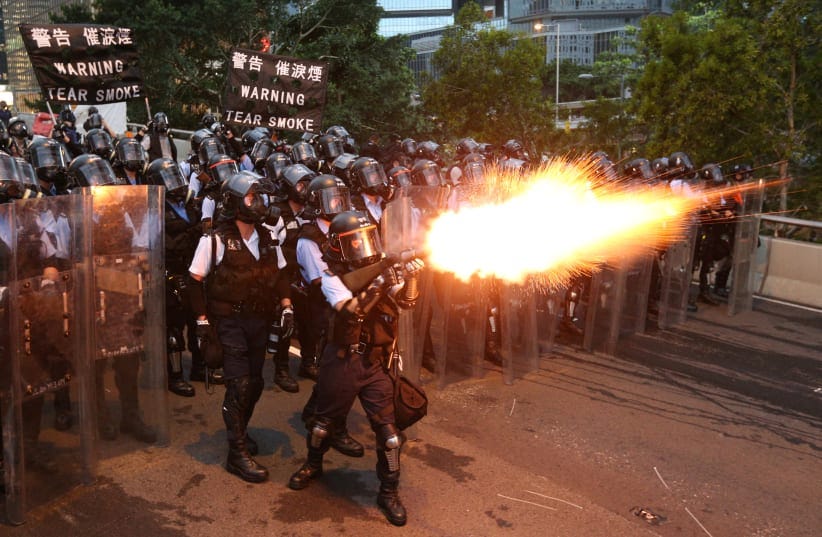
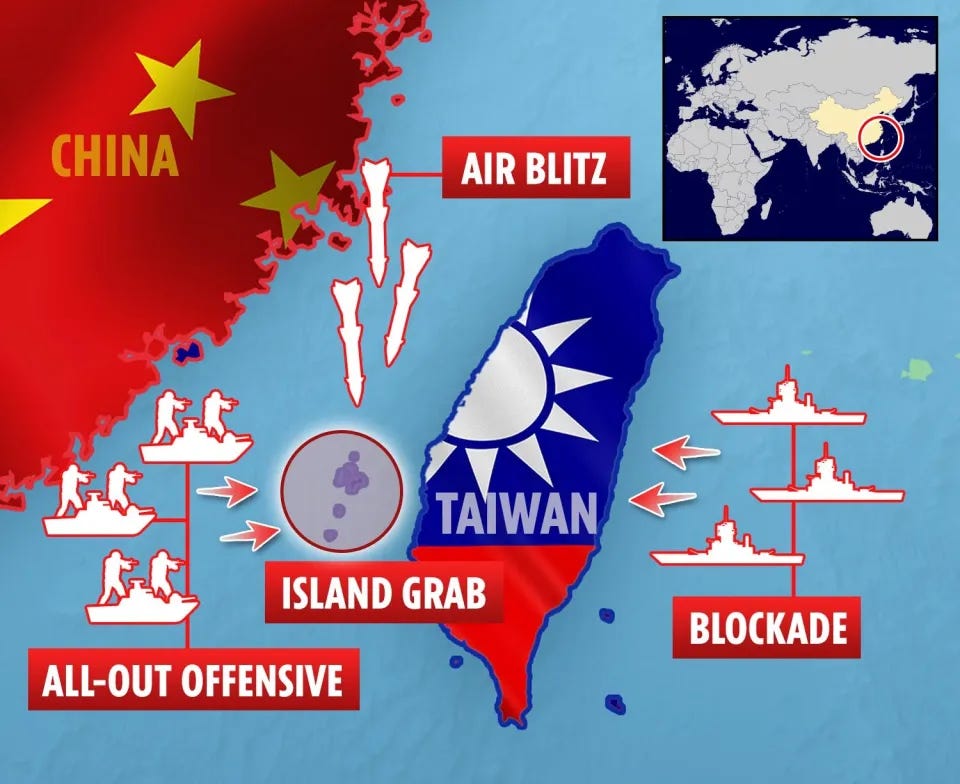
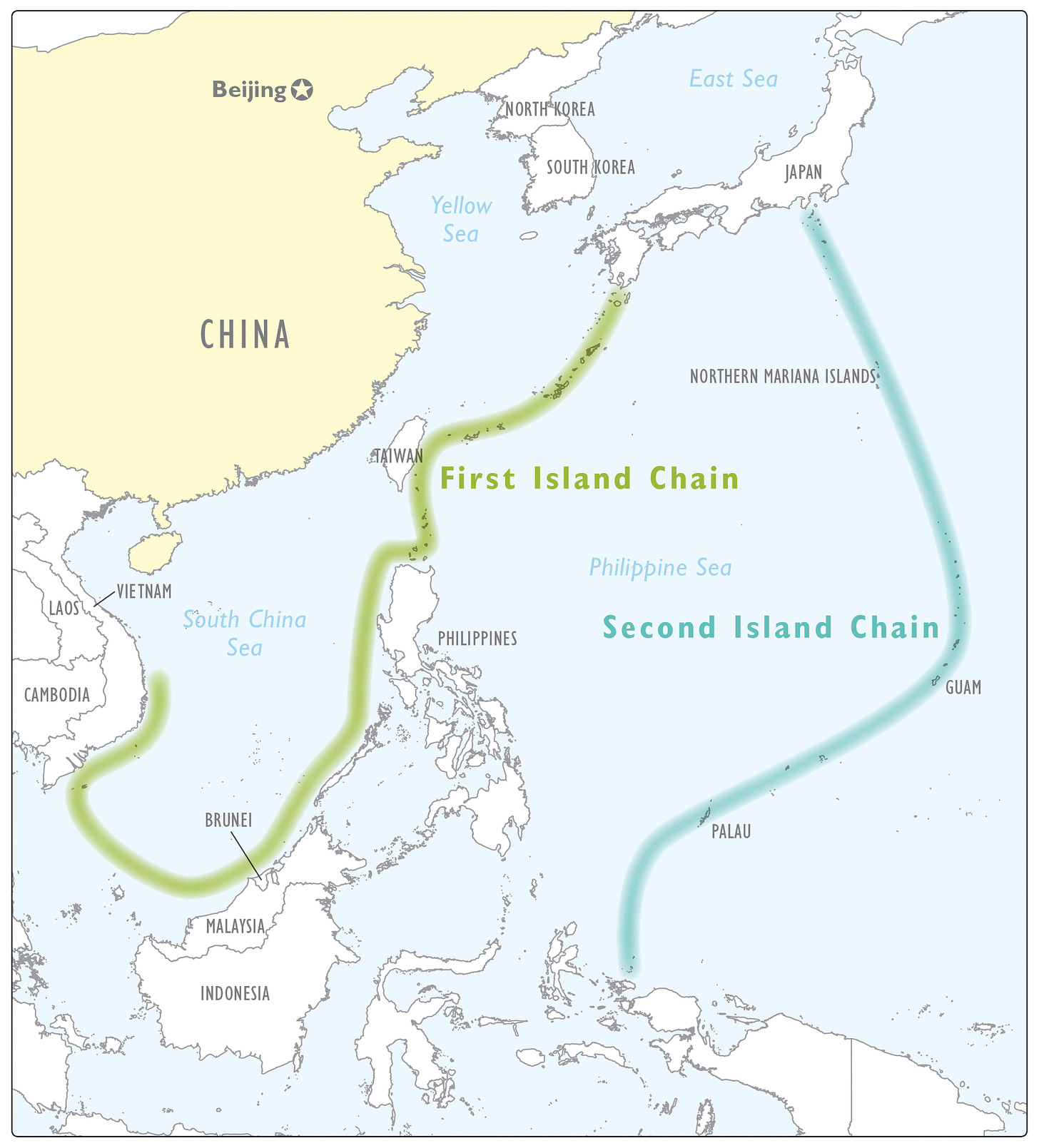
Good illustration and really cool piece of writing. What is missing is more on the economic hellscape China will create for the Taiwan, and frankly the US. Furthermore, there will be action within our own borders to delay response of forces and create political problems and to create domestic problems with the goal of forcing us into submission. Not to be a downer, but all the good ideas you list here must be done during an contentious election year and amidst a Congress that borders on unhelpful when it comes to fiscal stability. This will require Churchillian-levels of leadership in Washington. IDK man. Great points!!!
Expanding the industrial base, undoing the horrible policy effects of "The Last Supper" would be a very good initiative for this urgent / emergent conflict. For example, creating 2nd sources of our long range munitions is critical - what we did often back in the 60's thru 80's, but abandoned in the 90's and beyond. The "startups" can have some role in this, but expanding energetics R&D and production beyond the traditional primes to other traditional primes will be necessary to get to scale on LRASSM, SM-6, SM-3, Tomahawk, etc., and for the new longer range CPS.
And for goodness sake, we need to revoke/modify the Jones Act and allow Korean and European ship yards to actively compete on the same level as our US ship yards, if we ever hope to get to scale in the much-maligned-but-still-critical conventional combat force ships (DDGs, Cruisers, Amphibs, large/very large autonomous surface warfare vessels); as well as commit to the $$ for sailors to crew and readiness $$ to maintain them - and as forward deployed as possible. Congress is a huge obstacle to these necessary industrial base and deployment postures. Platform capacity will also be necessary to protect our NATO/European flank, as Russia-Putin is sure to create mischief if/when China attempts "reunification" with Taiwan.